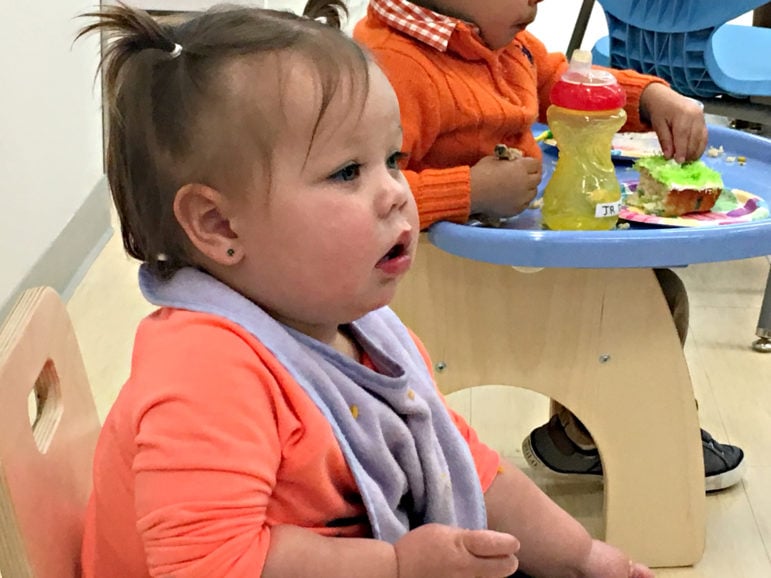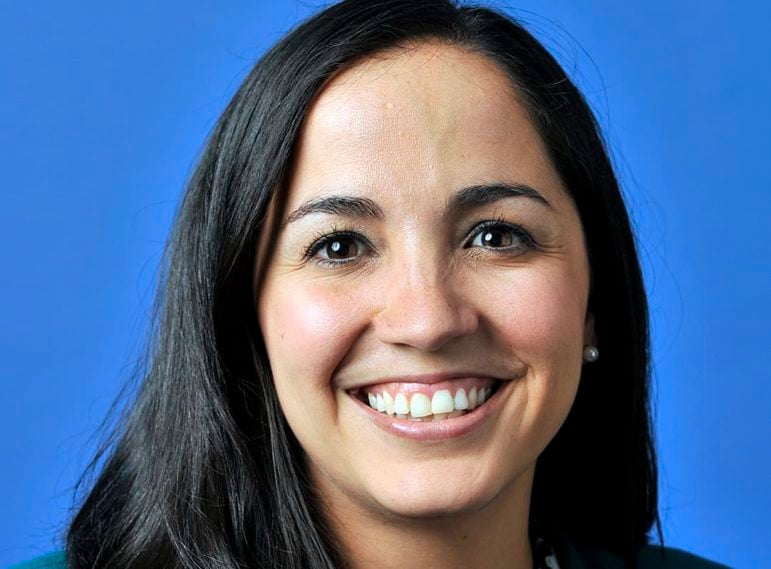
More New Mexico families will qualify for child care assistance without being wait-listed, and could stay longer on the program under proposed rules posted Monday by the Children Youth and Families Department.
Under current eligibility limits put in place in the wake of a lawsuit against CYFD, families can qualify and stay on the child care program if they make less than two times the federal poverty level, but not one dollar more. The proposal would take the exit point up to 250% of the poverty level.
To put the changes in perspective, a single mother with two children could make up to $42,660 per year and qualify, and could keep getting child care assistance with increasing co-pays until she earned $53,325. About 90 percent of child care assistance recipients are single-parent households.
“It’s just our new approach and our plan to make New Mexico a safe place to be a child,” Charlie Moore-Pabst, a spokesman for CYFD, told New Mexico in Depth.
He said widening the eligibility window will help low-income families keep their benefits as the state increases the minimum wage or be able to accept raises that might otherwise disqualify them from thousands of dollars in child care assistance.
“This is a huge (help) to working poor families, allowing them to come out of poverty and stay out of poverty, which is why that exit level is important,” he said.
Moore-Pabst said the department calculated it would cost nearly $10 million to serve an additional 1,436 children from Oct. 1 through the end of the fiscal year on June 30 if the rules are approved. He said CYFD had cobbled together enough money from its current budget to ensure it would not need to put any eligible family on a waiting list.
For the fiscal year that begins July 1, 2020, however, CYFD would likely ask the Legislature to appropriate $26.3 million to add 4,163 additional children. If demand was higher than it calculated however, the department would need to ask for supplemental money or use emergency procedures to reinstate a waiting list.
The proposed rules are in response to a lawsuit by OLÉ and the New Mexico Center on Law and Poverty that accused CYFD under then CYFD secretary Monique Jacobson of making rules without public input and for confusing and arbitrary decisions on eligibility for the program.

Attorney Sovereign Hager was pleased overall with the proposal, especially the expanded eligibility and a posted formula that lays out how CYFD determines eligibility and what parents pay in cost-sharing so that people can see whether co-pays are calculated correctly and they can appeal denials.
But even with the proposed changes, Hager said there is still work to be done to make child care in New Mexico affordable.
“What we see is that families end up paying upward of 10 to 15% of their income toward child care costs, even when they are getting assistance,” she said. “Families have been pretty clear that it’s too much. It’s one reason why only a third of eligible folk access the program as it is.”
That is certainly true of Helen Kennedy. She and her husband still won’t make the new cut off, but she feels passionate about the need for affordable child care.
“I think this is a good start and then we should build on it because child care should be accessible to everyone,” Kennedy said. “My husband and I are on the edge of middle class, but we’re never going to move beyond not-quite-middle-class. We still can’t quite make it.”
The Albuquerque mother works in retail and most of her paycheck goes toward child care for her nearly 2-year-old son and to provide health insurance for the family. The couple spends about 12% of their combined income on child care.
Federal guideline considers spending 7% of income on childcare affordable.

New Mexico Voices for Children, a nonprofit that has advocated for wider eligibility to ease the child care assistance “cliff effect,” also praised the proposal. It pushed a bill in the 2019 legislative session that would have taken the exit point to 300% of the federal poverty level.
“It’s fantastic. It’s a really significant step forward for child care assistance in New Mexico,” said Amber Wallin, New Mexico director for the annual Kids Count report on child wellbeing.
There will be a public hearing on the proposed rules changes at 10 a.m. Aug. 30 at Apodaca Hall, 1120 Paseo de Peralta, Santa Fe. The public can comment online on the CYFD website here. Or email [email protected] with the subject line “8.15.2 NMAC Public Comment.” The comment period ends at the conclusion of the hearing on Aug 30.
It would serve the NM Governor and the State of New Mexico well to implement a CYFD/Juvenile Probation intense outpatient treatment/prevention diversion program in Rural Northern New Mexico as a state grant piolet program. Home base the piolet program out of Santa Fe (which is considered rural Northern New Mexico) and provide a have three week end, fifty-two hour treatment travel program for Santa Fe, Clovis, Las Vegas, Tucumcari, Raton, and Clayton New Mexico. The treatment would be provided on Friday evening, all day Saturday and all day Sunday three consecutive week ends; eighteen hours of group treatment time per week end. The program would include a standardized pre-post assessment with an out come report that would make it a BEST PRATICE treatment offering and working on site lunch hour on Saturdays and Sundays. The referring CYFD and/or probation provider would administer the pre-treatment standardized written assessment. The week end treatment provider would implement the post testing; outcome data and reports would be the responsivity of center office in Santa Fe. The treatment program would include an eight essential life skill education component and a strong alcohol and drug treatment component. The judges could use this offering as a diversion offering for youth crime offenders or probation violation offenders. This would be an option for Juvenile probation officers and CYFD service providers also. The program would be offered in the community where the offender lives; providing an opportunity to grow where they live and establish a correction focus peer support group in the community where they live. Residential inpatient treatment offers a free responsibility vacation like escape experiences and the offender goes back into the community where no peer support foundation has been cultivated and others have caretaken the offenders in community responsibilities. The week end based program doesn’t take the offender out of their school setting or a work setting The program provides more in community treatment hours than any local individual one hour a week local agency offering in a year. The have treatment will travel program will be offered one three week end time period for each of the Northern New Mexico rural locations identified above. Each location must have twelve clients for participation and the treatment location will be provided by the location obtaining the three week end treatment service. All treatment materials and service providers will be provided by the piolet program staff out of Santa Fe. There will be two facilitators for each three week end treatment offering; however, when a community local therapist paid provider co-facilitator can be obtained this would be an endorsed choice. The piloted program will have all the treatment materials and VCR equipment in a traveling treatment van that will be house out of the central office location in Santa Fe. The pilot grant program administrators would meet with and work out diversion service improvements with the professionals recommended by the Governor of New Mexico.
OK, sober up. CYFD takes a more generous tack, and hands out more of OUR money to this program, and those lobbying for the program are shown with happy smiles…. What a lovely show…. WE pay for this, not CYFD, and CYFD has a long and dirty rep of very ugly management. Still thrilled??
What program(s) don’t get funding because of this move? I guess we don’t know, and they’re not going to tell us. Its fun to hand out OUR tax dollars, but with no accounting or analysis.
This kind of thinking is what drove the Founding Fathers NUTS, and why they didn’t trust Democracy, and history shows that they didn’t. They didn’t want direct elections for President and the Senate, because they didn’t trust democracy.
Left to themselves, folks like to give themselves benefits, and hand someone else the bill. The Democrats are particularly bad at doing this.
So, as a Party Pooper, who’s going to pay the bill on this one. Are we having a bake sale??
While CYFD Proposal is good news, the article was less than ideal leaving the average reader wondering, what are we talking about? What exactly is the average dollar amount for individuals ? How is it received? What does it pay for, & what won’t it pay for? What’s the difference in the life of a sample child with & without this money?
Keep up the good effort to inform us all.